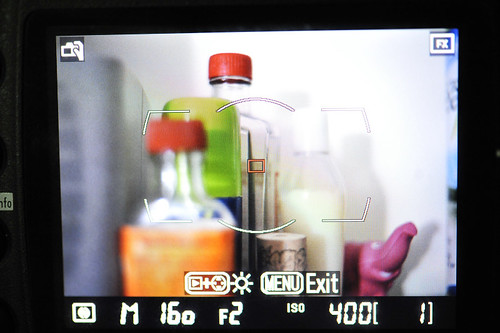Obtaining a correct focus can make a difference between a useable image and the ones that end up in the recycle bin. What becomes more frustrating is when you want to photograph a subject but the digital SLR Autofocus (AF) would not obtain a focus on that subject a.k.a “Focus Hunting”. This article was written to provide the reader with valuable insights on why it happens and how to workaround it. Although this article and its images make specific references to Nikon cameras and certain models, it is still suitable for everyone with a digital SLR.
Introduction
Autofocus (AF) is a very useful feature in today’s modern digital SLR. It enables us to have accurate focus on a subject in a fraction of a second. The majority of digital SLR AF systems relies heavily on the light and contrast within a scene to achieve fast and accurate focus.
But if you attempt to take a picture of a scene or objects (mirrors, blank walls), or subjects in dim conditions or when there is little contrast between the subject and the background there is a high possibility of focus hunting occurring or the AF fails to achieve focus entirely. Before we provide workarounds we must first understand what AF sensors are and what are the differences between cross and horizontal type.
AF sensors
Most modern digital SLR comes with a multitude of AF point sensors ranging from 9 to even 51 points. These AF point sensors are clearly visible within the viewfinder however; most users did not know that within those points there are horizontal point sensors and cross type sensors. The image below is what a Nikon D300, D700 or even a D3 user would see in their viewfinder when they use a 51 AF point sensor.

The 3 columns in the middle were highlighted in red because they are cross sensors while the remaining AF points are horizontal sensors. You may be wondering by now what is the difference between the two sensors.
Useful tips and tricks
When shooting under the conditions outlined above or when you are plague with focus hunting, some of the tips below may be able to help you in achieving faster and more accurate focus:

Introduction
Autofocus (AF) is a very useful feature in today’s modern digital SLR. It enables us to have accurate focus on a subject in a fraction of a second. The majority of digital SLR AF systems relies heavily on the light and contrast within a scene to achieve fast and accurate focus.
But if you attempt to take a picture of a scene or objects (mirrors, blank walls), or subjects in dim conditions or when there is little contrast between the subject and the background there is a high possibility of focus hunting occurring or the AF fails to achieve focus entirely. Before we provide workarounds we must first understand what AF sensors are and what are the differences between cross and horizontal type.
AF sensors
Most modern digital SLR comes with a multitude of AF point sensors ranging from 9 to even 51 points. These AF point sensors are clearly visible within the viewfinder however; most users did not know that within those points there are horizontal point sensors and cross type sensors. The image below is what a Nikon D300, D700 or even a D3 user would see in their viewfinder when they use a 51 AF point sensor.

The 3 columns in the middle were highlighted in red because they are cross sensors while the remaining AF points are horizontal sensors. You may be wondering by now what is the difference between the two sensors.
- Horizontal sensors – like the name suggest only utilize horizontal lines to detect contrast between the subject where you attempt to focus and the background.
- Cross type sensors – utilizes both horizontal and vertical lines to detect the contrast between your subject and the background.
Useful tips and tricks
When shooting under the conditions outlined above or when you are plague with focus hunting, some of the tips below may be able to help you in achieving faster and more accurate focus:
- Focus assist lights – is a very useful feature which comes in handy when dealing with such conditions. This option is available on all of the Nikon DSLR range except the D3. I learn this the hard way but you should not; the AF assist light would only work when your AF point is at the center and you are in single servo (AF-S) mode. Any other setting or mode and the focus assist light would not work. This also applies to SU-800, SB-600, SB-800 and SB-900 which has build in focus assist.
- Use AF Cross type sensor – using these sensors under such conditions would greatly improve focus acquisition speed. Any trick is to hold the shutter half way and move your body back and forth this helps improve focusing speed.
- Focus on the edge of the subject – Focusing on the edge of the subject under low light / low contrast conditions greatly increase acquisition speed. Utilize the center AF point and attempt to focus on the edge of the subject, holding the shutter half way, recompose your shot and press the shutter release button all the way.







This has been helpful. Thank you!
ReplyDeleteAlthough this is now an old post, I found it very interesting.
ReplyDelete